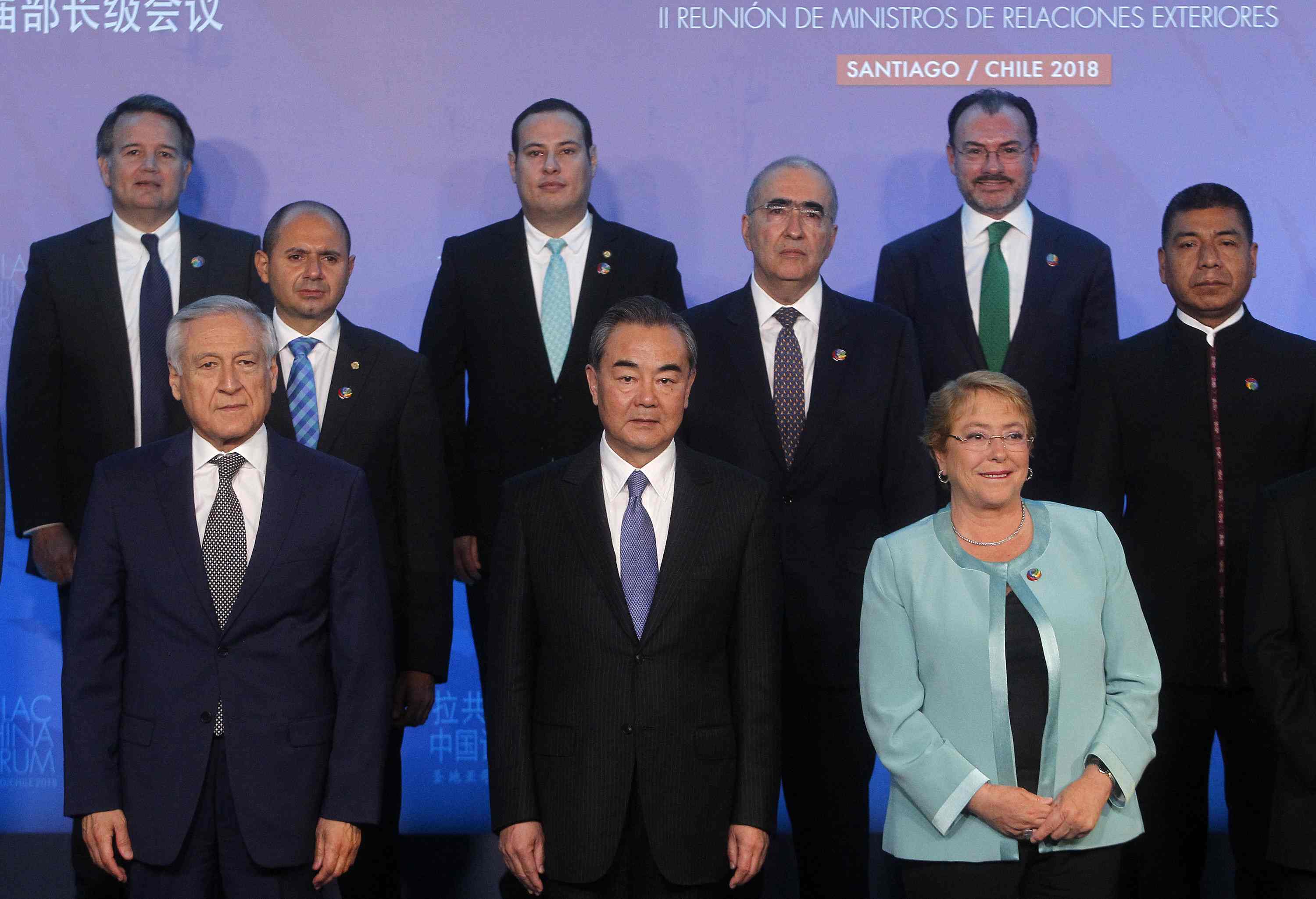
Opinion
16:58, 20-Apr-2019
Is Latin America and the Caribbean the next battlefield between the U.S. and China?
Updated
18:28, 20-Apr-2019
Alessandro Golombiewski Teixeira

Editor's note: Alessandro Golombiewski Teixeira is a National Thousand Talent Distinguished Professor of Public Policy at the School of Public Policy and Management, Tsinghua University, and a professor of International Business at Schwarzman College in Tsinghua. He is a former Special Economic Advisor of the President of Brazil and former minister of Tourism, and minister of Development, Industry, and Foreign Trade of Brazil. He was also president of the World Investment Association – WAIPA. The article reflects the author's views, and not necessarily those of CGTN.
Latin America and the Caribbean (LAC) was the focus of global competition from the 15th and 16th centuries following its discovery by the Spanish and Portuguese to the Cold War era when the U.S. and the Soviet Union fiercely contested for influence. After the fall of the Berlin Wall, the region became a geopolitics-free zone, with center-right and center-left democratic regimes alternating in regional countries. Now, it is under pressure from Washington to reduce its economic ties with China.
However, the main question is: Can the United States diminish China's influence in the region?
After the 2000s, the world's economic center of gravity shifted from the developed economies towards emerging economies. China and LAC emerged as key actors in the global economy. These changes at the global level significantly strengthened economic ties between LAC and China.
Meanwhile, in the last two decades, although the U.S. continued to be the main trading partner and largest investor in the region, Washington placed little importance on U.S.-Latin America relations, allowing Beijing to increase its economic and political influence in the region.
This new geopolitical and economic situation has affected the U.S. influence in the region and impacted the alignment of different governments in the region to American foreign policy. It is only with the recent presidential elections in Latin America in 2018 and at the beginning of 2019 that the Trump administration placed increased importance on its policies towards the region. Indeed, his engagement has paid off with the election of populist center-right and far right-wing presidents in Brazil, Colombia, Paraguay, Argentina, Ecuador, and Costa Rica.

Chile's Foreign Minister Heraldo Munoz, China's Foreign Minister Wang Yi and Chilean President Michelle Bachelet pose for a photo at the Second Ministerial Meeting of the Forum of China and the Community of Latin American and Caribbean States (China-CELAC) in Santiago, on January 22, 2018. /VCG Photo
Chile's Foreign Minister Heraldo Munoz, China's Foreign Minister Wang Yi and Chilean President Michelle Bachelet pose for a photo at the Second Ministerial Meeting of the Forum of China and the Community of Latin American and Caribbean States (China-CELAC) in Santiago, on January 22, 2018. /VCG Photo
Former U.S. Secretary of Defense James Mattis and other top Trump administration officials have toured the region trying to lead and solidify a cooperation agenda. With this agenda, the country hopes to pressure countries to lessen China's influence in the region by selling the idea that LAC must be better positioned in the global economy through a neoliberal agenda, with the U.S. as their natural ally in pushing it forward.
Some countries' leaders would prefer an automatic alignment with Washington's foreign policy, but they are under pressure from their private sector and politicians to not take sides in this geopolitical scuffle due to deepening economic ties with China.
It is easy to understand why. Over the last two decades, China has engaged extensively with LAC to foster closer economic and political ties, especially in trade, investment, and financing.
In terms of trade, since China entered the WTO, the growth of Chinese exports to Latin America has been exponential. According to the Annual Report of the Economic Commission for Latin America and the Caribbean, the share of total regional imports from China to the region increased from 2.3 percent in 2000 to approximately 16 percent in 2017 to reach a total of 266 billion U.S. dollars.
In 2000, China was not among the top three sources of imports for any of the LAC countries, today it represents the first or second origin for imports among all the region's major countries. From 2007 to 2017, the annual trade between China and the region grew by 151.2 percent, reaching 258 billion U.S. dollars in 2017.
In terms of investment, China's investments abroad reached a record high of 183.1 billion U.S. dollars in 2016 and, for the first time, exceeded foreign direct investment (FDI) inflows, making the country a net investor. Chinese companies' investment into LAC in 2017 is estimated to be over 25 billion U.S. dollars, equivalent to approximately 15 percent of total inflows to the region that year. The region has become the second-largest destination for Chinese foreign direct investment.
In terms of financing, China-LAC financial flows have seen unprecedented growth during the last decade, often concentrated in infrastructure, energy and mining. Accumulated lending has surpassed 150 billion U.S. dollars (2005-2017). China has also increased its presence in the region with bilateral loans and membership in multilateral development banks like the Inter-American Development Banking in 2009 and the launch of the New Development Bank operated by the BRICS (Brazil, Russia, India, China and South Africa).
With these actions (trade, investment, and financing), China is well positioned in LAC. It is very difficult to envision LAC countries gaining international competitiveness without Chinese trade and investments.
However, the U.S. like to argue that China is now too close to its backyard, which can bring significant dangers as Trump pointed out many times. A current example of this situation is the political crisis in Venezuela. The United States and China have adopted different positions. The crisis has a broader significance: It highlights how LAC has once again become a region in which rival great powers struggle for influence and advantage.
In my opinion, Washington will eventually realize that contrary to a long-held policy, LAC is no longer their backyard and it is too late push China away from the continent. LAC needs China's cooperation more than it needs the USA, but until then the tension in the region will rise.
(Cover Photo: Federico Patino, head of Mexico's national infrastructure fund known as Fonadin, attends the 2nd Latin America China Investors Forum in Beijing, China, September 16, 2010. /VCG Photo)
(If you want to contribute and have specific expertise, please contact us at opinions@cgtn.com)

SITEMAP
Copyright © 2018 CGTN. Beijing ICP prepared NO.16065310-3
Copyright © 2018 CGTN. Beijing ICP prepared NO.16065310-3